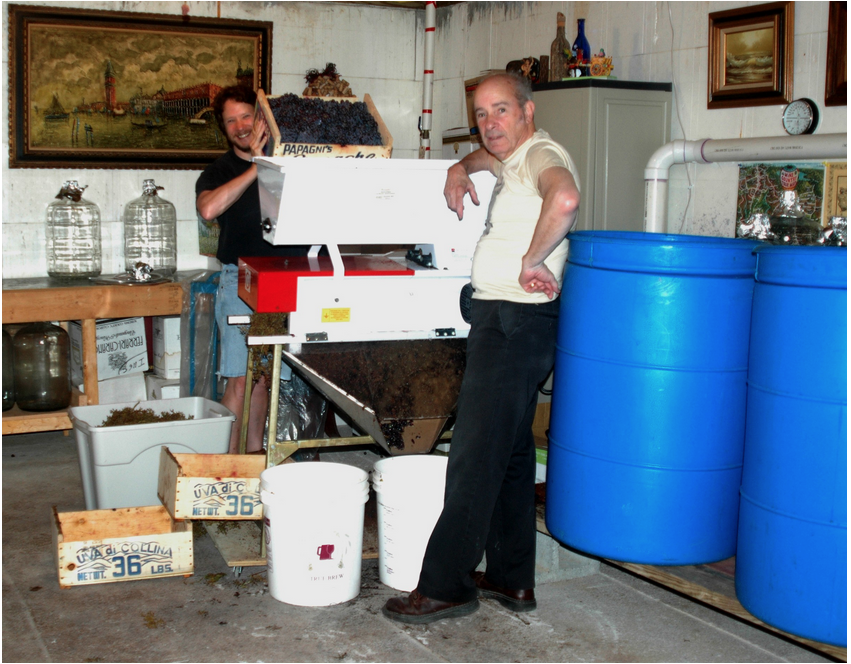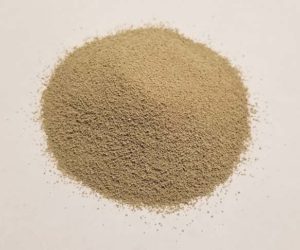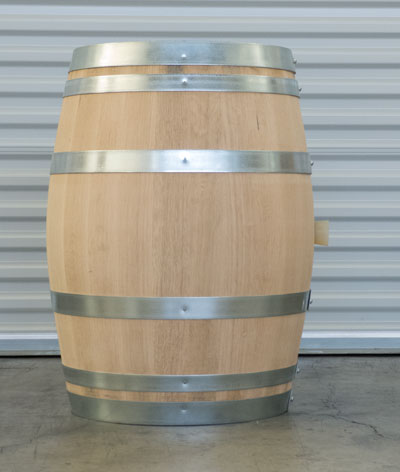Q
I recently bottled a batch of Cabernet Sauvignon, which tastes fine but has an off odor. I keep all my notes and regularly follow the same procedures. I buy my juice already pressed at a very reputable supplier and have never had a bad batch. When I started the wine it smelled fine and it wasn’t until I bottled it that I noticed the strange odor. Did I miss something, or will this go away with aging?
Matt Vickey
Erie, Pennsylvania
A
I wish I could help you out with your off-odor issue a little bit more than I think I’ll be able to. Because you didn’t include many details about what your off odor smells like or any analysis or many winemaking details, it’s tough to diagnose from afar and help you treat this problem or help you prevent future issues.
Off-odors that were not present in the wine during aging but show up later in the bottle are often reductive sulfide issues (disulfides and mercaptans) which smell like burnt rubber or onions, Brettanomyces infections, which smell like Band-Aids or “sweaty animal,” and “corked” aromas (TCA or tri-chloranisole), which smell like wet paper, wet cardboard or a “swampy” aroma. Since I don’t know what you might be experiencing, I’m not going to launch into a treatment and prevention program for all of the above, but one or more of these are my best guesses.
Your query does, however, bring up something that might help anyone writing in — it always helps me if you can give enough relevant detail about your problem. Such details could include:
• Varietal produced
• Origin of the fruit
• Style of wine you aimed for (dry red, rosé, sweet, sparkling etc.)
• When you started to notice something was going wrong. For example, “After I racked the wine for the first time I noticed a white film growing on top of my carboy three days later.”
• A sensory description — what does your off-odor smell like? What does the film you are reporting on your carboy look like? What does your “funky” wine taste like?
• Any relevant chemical analysis or numbers you may have – Brix, pH, TA are the obvious places to start. Others that seem important to you and can also be helpful and might include: starting Brix, maximum temperature reached during fermentation, final alcohol, VA, and FSO2.
These numbers are another good way to paint me a picture of your wine at a distance. For example, if your pH is 3.95 and you are reporting a vinegar off-aroma, I’m going to say you most likely have a VA issue caused by bacteria (which thrive at high pHs). It will help me tell you what you can do about that existing batch (get the pH down by adding some acid, and adjusting the FSO2 in hopes of driving off some of that VA aroma down and stopping it from climbing again. I’ll also be able to counsel you to keep your acid levels high enough for future batches to help prevent spoilage bacteria growth.
Now, numbers aren’t everything, which is why I mentioned them last. When diagnosing a stuck fermentation, I don’t need to know the daily fermentation rate or that the residual sugar is 7.89 g/L. All I need to hear from you is that it tastes sweeter than you would like it.
It may seem like a lot of data, but concise details will help me to better diagnose your problems from a distance.
Q
I am new to homemade winemaking and I want to begin making Port-style wines. I have looked on winemakermag.com for information about Ports and have learned a lot. As far as fortification, do you always have to add distilled spirits or can you actually get to the higher alcohol content by continuously feeding the wine sugar until it reaches that appropriate level and then add the sweetness at the end if needed?
John Lagneau
via email
A
Welcome to the wonderful world of fortified winemaking! Making Port-style dessert wines is really fun.
One of the side benefits of making these types of wines is that fortified wines are typically more shelf-stable than other table wines because its high sugar and alcohol levels (typically 6–9% and 18–21% respectively) helps protect it both from oxidation and microbial spoilage shenanigans. This means you can open a bottle, sip a glass or two and simply cork it up and put it back on the shelf for a few days or weeks without too many ill-effects (to the wine, I mean!). For home winemakers and those new to winemaking, fortified wines can be more forgiving for a similar reason — because they are all about the power of the fruit, sugar and booze it means no one will notice as much if your acid level isn’t perfectly adjusted, if you over-oaked it or if you have too much or too little tannin. They are not exactly “finesse” wines the way, say a 13.8% Russian River Pinot Noir would be.
A simple procedure for a grape-based Port-style wine would include the following: inoculate 23–26 °Brix red grapes with a neutral-aroma yeast. When Brix of your normal fermentation reaches 10–12, begin “feeding” the fermentation alcohol to arrest the fermentation, mixing the must almost continually in order to get a good distribution of the added alcohol throughout your fermenter. Brandy (distilled wine, 80 proof/40% alcohol) is often added to grape Ports, while fruit-based Ports often rely on neutral grape spirits or other aromatically-neutral alcohol so the fruit flavors and aromas can shine through. I know many home producers use Everclear as it has a high alcohol content (151 Proof/75% alcohol in some states, 190 proof/95% alcohol in others) and no other flavor or aroma. For fruit Ports, I personally like to use neutral spirits to let the fruit shine through, and for grape-based Ports, I think using oak-aged spirits can bring a benefit — it’s up to you as the winemaker, however, to decide what works best in your Port.
Depending on your yeast strain’s alcohol tolerance, the yeast will begin to lose steam as the alcohol level rises beyond what they can tolerate, typically 14% alcohol and above. Essentially, the rising alcohol level will kill your yeast cells and you’ll be left with a wine that has un-fermented sugar between 6–9% and hopefully an alcohol content of 18–21%. I recommend aging the stopped, sweet and alcoholic wine in a neutral oak barrel (or in a carboy or keg with French oak chips if you don’t have a barrel) for at least six months before thinking about bottling. Some fruit Ports can be ready faster than grape-based wines, which often need quite a bit of time — at least 10 months — to mellow out. I like to give fortified wines at least 18 months bulk aging to let them throw deposits and precipitates. Because of the higher alcohol content, proteins and other material will tend to come out of solution over time.
As you might imagine, there are many variables that will dictate what the final alcohol level and residual sugar level will be. The ability of your yeast to resist alcohol, your initial Brix and the alcohol level of your added spirit will all contribute to the algebra. When I worked at Bonny Doon, I remember building spreadsheet models where I would plug all of that data in to predict my final sugar and alcohol content, as well as when it was predicted my fermentation would stop. Whew, you can geek out on that stuff!
If you’ve been keeping up with the math, here, you’ll understand that you can’t just feed your way to fortified. Even by using alcohol-tolerant yeast and step-wise sugar additions, your yeast will peter out at no higher than 15.5% alcohol . . . almost high enough to be fortified, but not quite. You’ll just have an alcoholic wine with some residual sugar. To really smell, age and drink like a Port-style dessert wine, you really want your alcohol to be a little higher.
For further reading, check out the column that Joe O’Neal wrote on fruit Port back in 2004: www.winemakermag.com/component/resource/article/313
Q
After reading a recent article in WineMaker about using a pump to transfer wine, I put together my own pumping system. My question pertains to the possible negative effect of the wine going through brass fittings in the tubing. It only takes about four minutes to transfer the wine, but it all passes through one brass reduction fitting along the way. I would have preferred to incorporate a stainless steel fitting, but I haven’t been able to find one. Anyway, any guidance you can send along would be appreciated. (P.S., in the photo below), that handsome young guy pouring grapes into the hopper is my older son, also named Peter . . . as is his son.)
Pete Mauro
via email

A
You might be encouraged to know that brass fittings have a long and storied history in winemaking. In fact, if you travel the back roads of Europe and poke your head into the cellars, garages and barns of many family wineries, you’ll notice quite a few brass spigots, tubing connectors, reducers and spouts around. The metal is easy to work, affordable and easy to locate. In places like the Rhône Valley or Bordeaux, however, things might be more modernized with a bit more stainless steel. This is because stainless steel is just a better all-around winemaking metal.
Brass is softer than stainless steel, so it can pit and scratch more over time, which can make cleaning more difficult. It also will lose its threads faster and so is more prone to leaks with each harvest season. It can really take a beating if you drop a fitting on the floor. Stainless steel just doesn’t have the structural issues that brass does.
The biggest negative in using brass for winemaking purposes, in my opinion, is its tendency to be soluble in wine and how hard it is for us to predict how much might or might not leach into our batches during normal use. Brass fittings can be better for higher pH liquids like beer or sea water, but the acidity of wine tends to make it a great solvent.
Now, a little copper (since brass is an alloy of copper and zinc in varying percentages) is good for wine, right? Sometimes yes, we do add copper sulfate (CuSO4) to wine to help with sulfide issues (hydrogen sulfide smells like rotten eggs and is a common fermentation and young wine defect). I won’t kill you with the chemistry, but the elemental copper in copper sulfate binds up with the sulfur-containing compounds, yielding the product less-smelly. Sometimes if you make the addition early enough and the level of your stinky compound is low enough, a copper sulfate treatment can make your problem go away entirely.
One problem with copper, and by extension, brass, is that residual copper in large doses is poisonous. The U.S. legal limit for residual copper (as copper, not CuSO4, which is only 25.47% copper) in wine is 0.5 ppm. Excess copper can also lead to a visual defect called “copper casse,” which is a fancy way of saying “haze.” Copper can complex with proteins in wine, leading to a protein-copper haze that is difficult to remove, even with a bentonite fining. Excess copper can also be a catalyst for oxidation, increasing the chances of encountering oxidative off-aromas and off-colors in wines. Because of these dangers, it’s best to add copper in a measurable amount, where you are sure you can keep the residual copper content of your wine well under the legal level and under levels where it’ll be in chemical excess and free to participate in all of those undesirable reactions.
Because brass can contain widely varying amounts of copper, anywhere from 50%–70%, and because leaching depends on wine pH and contact time, it’s really hard to judge how much copper might find its way into your wine through the use of a brass fitting. In addition, brass can also contain significant amounts of lead, or up to 2%. Since you might not know the lead content of your brass, I’d say it’s the very safest to stick with stainless steel for winemaking.
As for stainless steel fittings, check for suppliers among WineMaker advertisers (there is a directory of advertisers in this issue on page 70). I’ve personally had good luck with the following two equipment websites:
• The Compleat Winemaker: www.tcwequipment.com
• WE Winery Equipment Ltd. www.winery-equipment.com







